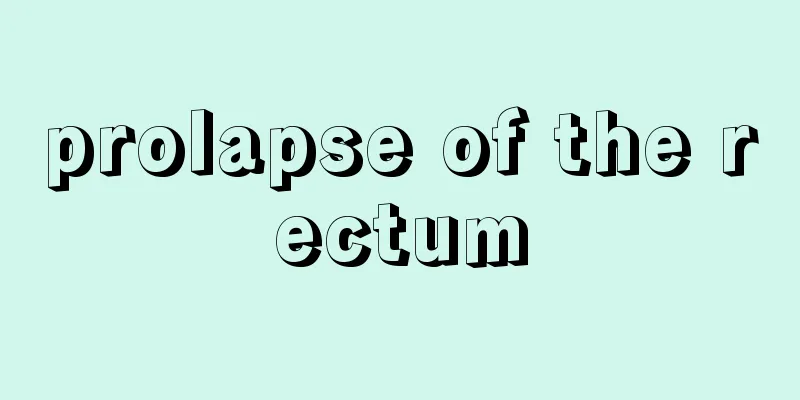Wall painting - Hekiga (English spelling)

|
It refers to paintings that are applied directly to the walls or ceilings of buildings with pigments, or canvas or panel paintings that are painted for a planned building wall and then installed after completion. It developed mainly as decoration for architecture and tombs, but in a broad sense, paintings on natural rock surfaces such as the Paleolithic cave paintings at Lascaux and Altamira, and the rock paintings at Tassili n'Ajjer, as well as wall decorations made with mosaics and tiles, can also be considered a type of mural. Although the scale and quality of the works vary, examples can be found in most regions and eras as the oldest form of painting. Wall paintings are closely related to the buildings on which they are painted, in terms of their purpose, design, and technique. In ancient times, there were many monumental works that decorated the walls of royal palaces, temples, and tombs. In ancient Egypt, there are many excellent wall paintings in burial chambers, and in Mesopotamia, they have been excavated at the Palace of Mari at Tell Hariri. In the Aegean region, those excavated at the Palace of Knossos on Crete and the Akrotiri ruins on Santorini (Thira) are famous. Although there are no murals from ancient Greece in the historical period, documents such as Pausanias show that Greek architecture was also decorated with murals. The Stoa Poikile in the Athenian agora was said to have been beautifully decorated with frescoes by the three great painters Polygnotus, Micon, and Panaenos. In ancient Italy before the Roman era, many underground tombs with murals have been discovered in Etruscan cities such as Tarquinia. Roman examples reflecting ancient Greek painting have been excavated from Herculaneum and Pompeii, two cities buried by the eruption of Mount Vesuvius. In the early Christian period, murals were painted in the catacombs, and in the Middle Ages, mural painting continued, as seen in the Reichenau Abbey and the Cathedral of Saint-Savin. However, mosaics were more prevalent in Byzantine churches, and in the Middle Ages, murals were generally painted using the less durable celtic technique, so there are few well-preserved murals. The period in which murals occupied the most important position in the history of Western painting was the Italian Renaissance, when the "true fresco" technique, pioneered by Giotto, passed through Masaccio, Piero della Francesca, Mantegna, and others, and ended with Michelangelo. Later Venetian painters, such as Tintoretto and Veronese, began to use oil paint on large canvases rather than directly on the wall. After the illusionist ceiling paintings of the Baroque period, mural painting in the West went into decline. Oriental murals are found in the tomb chambers of Buddhist ruins and tombs. The oldest examples of tomb murals date back to the Western Han Dynasty in China. The Ajanta Caves and the Dunhuang Caves (Thousand Buddha Caves) are Buddhist ruins famous for their murals. The murals of the Bamiyan Caves in Afghanistan are also famous, but they were destroyed in 2001 by the Taliban military regime along with the cliff-carved Buddhas, and most of them were lost. In Japan, representative examples include the tomb murals of the Takamatsuzuka Tomb, the murals of the Golden Hall of Horyuji Temple, and the door panel paintings of the Phoenix Hall of Byodoin Temple. In Japan, perhaps due to differences in architectural structure and aesthetic sense, murals fixed to the walls of buildings have not developed, and instead, there are screen paintings painted on sliding doors and folding screens. The relationship between murals and architecture involves a wide variety of issues, but if we focus on the relationship between the pictorial space of a mural and the space of the architecture itself, we can roughly categorize it into the following types. A mural that is simply a two-dimensional decorative painting that is integrated with the flatness of the wall itself emphasizes and clarifies the spatial composition of the architecture. The method of expressing the effect of an open window or door in a mural can be seen in Pompeii, but if this method is carried further, it can be used to deny the architecture by completely covering the surrounding walls with natural scenery, resulting in murals that transform the architectural space (such as the murals on Santon Island and the murals in ancient Roman villas). Buddhist murals in rock caves and medieval Christian cathedral murals are paintings that affect the space in which the viewer stands, and Renaissance murals are symbolic windows that open a world of imagination. And if the method of the open door in Pompeii is transformed into an exaggerated vertical perspective, it becomes a Baroque illusionist ceiling painting. [Hasegawa Saburo] "The Renaissance of Fresco Paintings - The Beauty of Florence as Seen in Murals" by Takaharu Miyashita (2001, Japan Broadcasting Publishing Association)" "Exploring the Origins of Art" by Yuji Yokoyama (Asahi Sensho) "Invitation to Fresco Paintings" by Aya Ohno (Iwanami Active Shinsho) [References] | | | | | | | | | | | |Source: Shogakukan Encyclopedia Nipponica About Encyclopedia Nipponica Information | Legend |
|
建造物の壁面や天井に顔料で直接描いた絵画、あるいは予定した建築壁面のために描き、完成後そこに組み込まれたカンバス画や板絵をいう。主として建築や墳墓の装飾として発展したが、ラスコーやアルタミラの旧石器時代の洞窟(どうくつ)壁画や、タッシリ・ナジェールの岩壁画のような天然の岩面に描かれた絵、またモザイクやタイルなどによる壁面装飾も広義には壁画の一種ということができるであろう。作品の規模や質は異なるとしても、絵画のもっとも古い形として、ほとんどの地域と時代にわたって作例がみられる。 壁画はその目的および造形・技術面でも、それが描かれる建造物と密接な関係がある。古代には王宮や神殿、墓室の壁面を飾るモニュメンタルな作例が多い。古代エジプトでは玄室の壁画に優品が多数あり、メソポタミアでもテル・ハリリ遺跡のマリの宮殿などで発掘されている。エーゲ海地方では、クレタ島のクノッソス宮殿とサントリン島(ティラ島)のアクロティリ遺跡で発掘されたものが名高い。歴史時代の古代ギリシアの壁画は現存しないが、パウサニアスなどの文献によって、ギリシア建築も壁画で飾られていたことがわかる。アテネのアゴラにあったストア・ポイキレはポリュグノトス、ミコン、パナイノスの三大画家によるフレスコで美しく装飾されていたという。ローマ時代以前の古代イタリアでは、タルクィニアなどのエトルリアの都市で、壁画のある地下墓室が数多く発見されている。古代ギリシア絵画の反映を伝えるローマ時代の作例は、ベスビオ火山の噴火で埋没した二つの都市、ヘルクラネウムとポンペイから発掘されている。 初期キリスト教時代にはカタコンベに壁画が描かれ、中世においてもライヒェナウ修道院やサン・サバンの聖堂などにみられるように壁画制作は続いた。しかし、ビザンティンの聖堂ではむしろモザイクが盛んとなり、一般に中世には耐久性の乏しいセッコ技法で描かれたこともあって、保存のよい壁画は少ない。西洋絵画史上、壁画がもっとも重要な位置を占めた時代は、ジョットを先駆者とし、マサッチョ、ピエロ・デッラ・フランチェスカ、マンテーニャらを経てミケランジェロに至る「真のフレスコ」技法が隆盛したイタリア・ルネサンスである。ついでティントレットやベロネーゼに代表されるベネチア派の後期の画家たちは、壁に直接描くのではなく、油彩でカンバスの大画面に描く方法を採用するようになる。バロック時代のイリュージョニズムの天井画を最後に、西洋での壁画は衰退する。 東洋の壁画は、仏教遺跡と墳墓の墓室にみられる。墓室壁画の古い例は中国前漢時代にまでさかのぼる。アジャンタの石窟、敦煌(とんこう)石窟(千仏洞)などは壁画で著名な仏教遺跡である。なお、アフガニスタンのバーミアン石窟の壁画も著名であるが、2001年軍事勢力であるタリバン政権により磨崖仏(まがいぶつ)(摩崖仏)とともに破壊され、大部分が失われた。日本では高松塚古墳の墓室壁画、法隆寺金堂の壁画、平等院鳳凰(ほうおう)堂の扉板絵などが代表的作例である。わが国では建築構造や美意識の違いからか、建築壁面に固定された壁画は発展せず、それにかわるものとして、襖(ふすま)や屏風(びょうぶ)に描いた障屏(しょうへい)画がある。 壁画と建築の関係には実にさまざまな問題が含まれ、壁画の絵画空間と建築自体の空間との関係に焦点を絞れば、およそ次のようないくつかの類型があげられる。 単純に平面的な装飾画として壁面自体の平面性と一体化した壁画は、建築の空間構成を強調し明瞭(めいりょう)にする。開かれた窓あるいは扉のような効果を壁画で表現する方法はポンペイに例があるが、この方法を推し進めると、周囲の壁面をくまなく自然の景物で覆い尽くすことで建築を否定し、建築空間を変質させるような壁画も生まれる(サントン島の壁画や古代ローマのビラの壁画など)。石窟の仏教壁画や中世のキリスト教聖堂壁画は、見る者の立つ空間に働きかける絵画であり、ルネサンスの壁画は、想像力の世界を開く象徴的な窓である。そしてポンペイの開かれた扉の方法を、垂直方向の誇張した遠近法に変形させれば、バロックのイリュージョニズムの天井画となる。 [長谷川三郎] 『宮下孝晴著『フレスコ画のルネサンス――壁画に読むフィレンツェの美』(2001・日本放送出版協会)』▽『横山祐之著『芸術の起源を探る』(朝日選書)』▽『大野彩著『フレスコ画への招待』(岩波アクティブ新書)』 [参照項目] | | | | | | | | | | | |出典 小学館 日本大百科全書(ニッポニカ)日本大百科全書(ニッポニカ)について 情報 | 凡例 |
>>: Beggiatoa (English spelling)
Recommend
Procureur de la publique (English) Procureur de la publique
…However, the principle of the innocence of indic...
Wanamaker
1838‐1922 American businessman. Born in Philadelph...
Hohhot - Huhhot
A prefecture-level city in the central Inner Mong...
Dreiperiding system
...He made great contributions as a museum man, s...
EC Law - EC Law
…European Union [Tanaka Toshiro]. … From the Euro...
Colored mortar - Iromorutaru
…The cement used to make mortar is usually Portla...
Bana (English spelling)
...Many other playwrights emerged, including Bhaṭ...
Raclette
…(5) Swiss cuisine and cuisine of Benelux countri...
Solidification structure
… [Metal structure formation process] A unique me...
Kinjo Castle
…The ruins of a castle in Higashi-ku, Osaka City....
Toruń (English spelling)
The capital of Kujawsko-Pomorskie Voivodeship in n...
Order of the Golden Kite
This was one of the Japanese medals used until the...
Cockroach - Cockroach
…Their backs are blue, their abdomens silvery whi...
Kajii Gate Site
Another name for Sanzen-in Temple in Ohara, Sakyo ...
Common Interest - Common Interest
...Since ancient Greece, it has been one of the f...








![Shido [town] - Shido](/upload/images/67cbc5d4e7378.webp)
